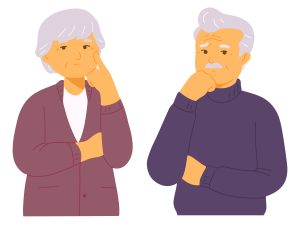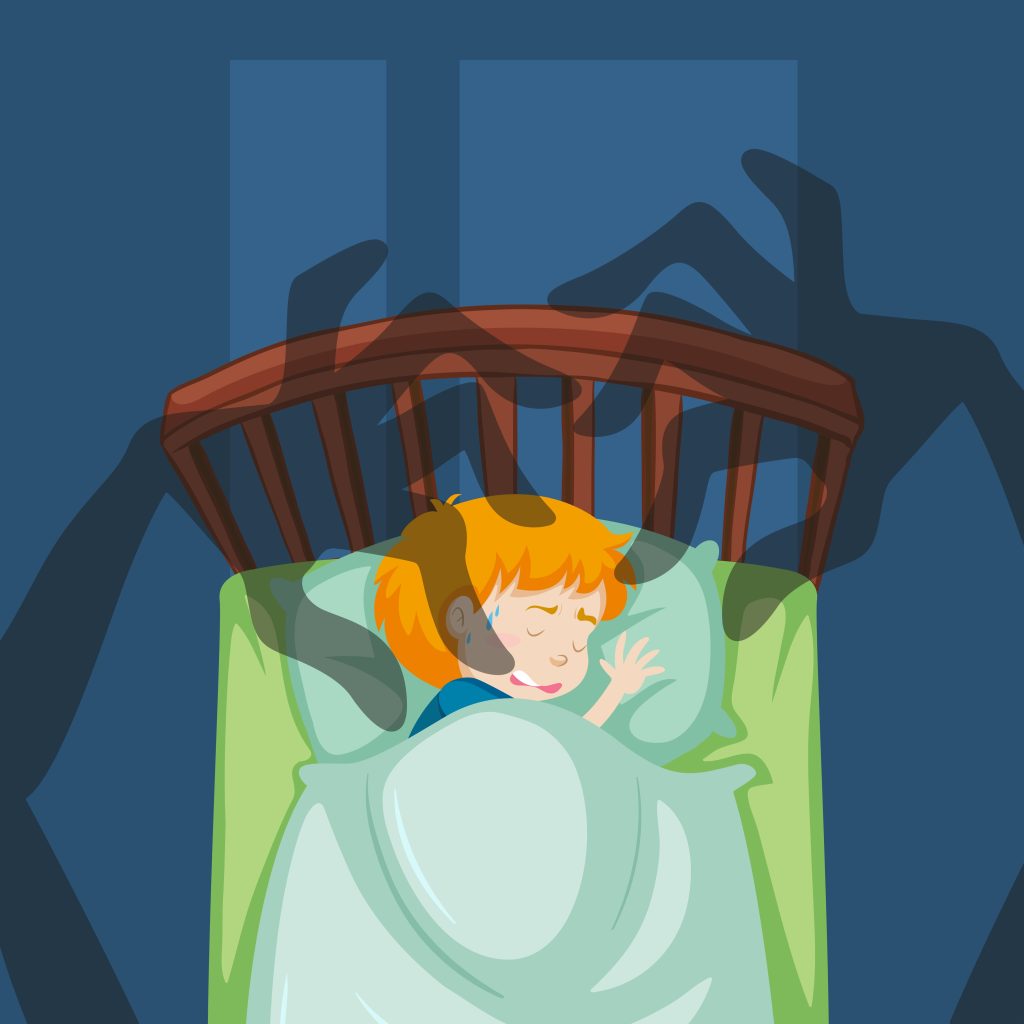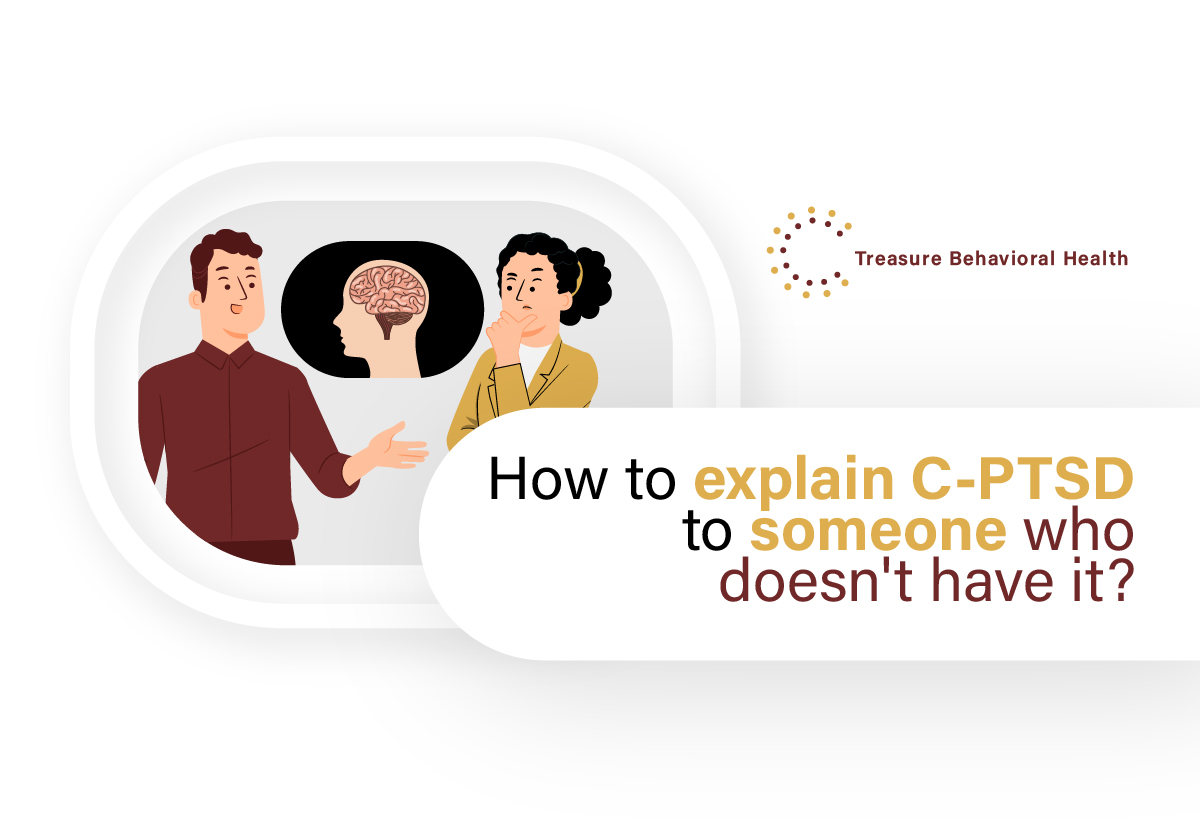Human beings have a strange ability to tell when they are in a critical situation. People who are diagnosed with C-PTSD have a more attuned sense of awaiting threats.
Yet, it can add more frustration and anxiety when your loved one doesn’t recognize your illness. At that moment, their behavior has a great impact on you.
Now, you might wonder how to explain C-PTSD to someone who doesn’t have it. Although it’s a daunting task but not impossible.
If you or anyone you know is struggling with C-PTSD, you might rely on Treasure Behavioral Health.
We are here with you and never let you feel alone.
What is C-PTSD?
Complex post-traumatic stress disorder is a mental health disorder. It can develop if you observe chronic (long-term) trauma. It includes stress responses, such as:
- Depression
- Having nightmares or flashbacks.
- Heightened emotional responses
- Avoid situations, places, and social gatherings.
- Face difficulties in supporting relationships CPTSD relationships.
What Might Cause C-PTSD?
Some painful options include:
- Taking a stand for your desire for too long
- Being forced to work that you wouldn’t want to do
- Being kept in slavery
- Ongoing domestic violence
- Long-term disability
Conceivably, the most common cause of C-PTSD is long-lasting childhood trauma. Rather than one awful experience, we’re talking here about constant events.
A kid might be sexually abused but in a random pattern. They might live with an adult that is impulsive and quick-tempered.
These types of circumstances leave such a child with aggression. They never feel safe and cannot see any possible way to escape it. For further details and information, you can contact us!
PTSD and Emotional Dysregulation
Emotional dysregulation is also termed as affect dysregulation. It defines a trouble with processing or regulating your expressive responses.
This can involve experiencing severe depression, annoyance, or anxiety. It will be difficult to control over time.
The signs of emotional dysregulation can include:
- Sudden mood swings
- Crying for no reason
- Difficult to calm down
- Intense emotional reactions
- Impulsive behavior
- Substance abuse
If you are scrolling for the best CPTSD therapist near me, reach out to us as we are here to take you out of this illness.
PTSD vs PTS
| PTSD | PTS |
| May include some intrusive thoughts, nightmares, avoidance, or hyperarousal, but generally less intense and shorter-lived | Intrusive thoughts, flashbacks, nightmares, avoidance, negative changes in thinking or mood, and hyperarousal behavior. |
| Not a formal diagnosis | A formal mental health diagnosis |
| Can occur after a traumatic event, but doesn’t always develop into PTSD | May or may not develop after experiencing a traumatic event |
| Sometimes require professional help | Often requires therapy and/or medication |
PTSD Flashback Types
Individuals with PTSD have several types of flashbacks. Several different forms of flashbacks can occur, each with its qualities and impact on the individual.
Intrusive Flashbacks
People with PTSD are most likely to experience intrusive flashbacks. These flashbacks can occur suddenly and spontaneously.
These are frequently prompted by memories of the traumatic experience.
Dissociative Flashbacks
Dissociative flashbacks are frequently accompanied by a sense of detachment from oneself or the world. During these episodes, people may feel as if they are seeing the distressing occurrence from a distance.
Likewise, it’s also like experiencing from a third-person perspective.
Emotional Flashbacks
Emotional flashbacks are characterized by the re-experience of overwhelming emotions. These are linked with a traumatic event, rather than clear visual or aural memories.
These emotional flashbacks may be overcome by fear, despair, rage, or embarrassment.
How To Explain C-PTSD to Someone Who Doesn’t Have It– Learn Hacks
There are a few hacks that you can use to explain your C-PTSD illness. These hacks include as:
- Explain that CPTSD develops after continuing trauma
- Use the evidence board equivalence
- Explain how the body responds to it
- Describe the impact of negative messaging
- Tell them what your causes are and how to support you
Does PTSD Get Worse with Age?

Mental health does not necessarily stay consistent across the age. Some of the difficulties you had as a young adult may lessen with time, but you may encounter new difficulties as you get older.
Post-traumatic stress disorder, or PTSD, is one of the most common mental health conditions among seniors. This condition can arise after you have experienced or witnessed a traumatic incident.
It includes war, a catastrophic accident, or the death of a close family member. Hence, PTSD is a condition that gets severe over time when left untreated.
Complex PTSD Nightmares

Managing Complex PTSD and Nightmares can be difficult and overwhelming. However, with proper understanding and coping mechanisms, you can find relief and restore control of your life.
The link between PTSD and nightmares is complex. It stems from trauma’s impacts on brain function. Moreover, it has a subsequent impact on sleep patterns.
Nightmares are among the symptoms of Complex PTSD. They can occur unexpectedly, with no apparent cause in our conscious brains.
They just occur because our unconscious mind is dealing with a certain memory.
What Not to Say to Someone with Complex PTSD
If you love someone with Complex PTSD (CPTSD), it’s essential to choose your words carefully. Here are a few things that you should not say to someone who is suffering from C-PTSD.
- It wasn’t too horrible, right?
- That happened in the past; why are you still upset?
- Calm down.
- You are overreacting. It has been years now. Get past it.
- You are too much right now.
- What is wrong with you?
- I don’t believe what you’re saying.
Concluding Note
How to explain C-PTSD to someone who doesn’t have it?It is such a critical condition that a person feels overwhelmed at that moment. Therefore, it is vital to deal with such sort of patient with calmness and in a very polite way.
PTSD typically stems from a sense of powerlessness, and its symptoms can transport you back in time.
Anyone who is trapped in a terrifying circumstance and cannot quickly leave can develop it. It’s not about the severity of the circumstance.
It’s about the fear, the stuck-ness, the inability to free yourself, the helplessness to improve things.
So, don’t hesitate to consult with Dr. Roberta Iyamu, she’ll solve all your concerns related to mental health.
FAQs
How do you talk to someone with C-PTSD?
While you should not force someone with PTSD to talk. Make it evident that you are interested and care, but don’t feel obligated to give advice.
What should you not say to a complex PTSD?
Therefore, it is critical to know what not to do. Avoid making judgments or offering unsolicited advice because it might be overwhelming.
What does it feel like to have C-PTSD?
Sense of worthlessness, shame, and remorse. Trouble managing your emotions. Finding it difficult to connect with others. Relationship issues, such as difficulty maintaining friendships and romantic relationships.
What living with C-PTSD is like?
C-PTSD sufferers may have emotions of shame, remorse, and low self-esteem as a result of the trauma.


No comment